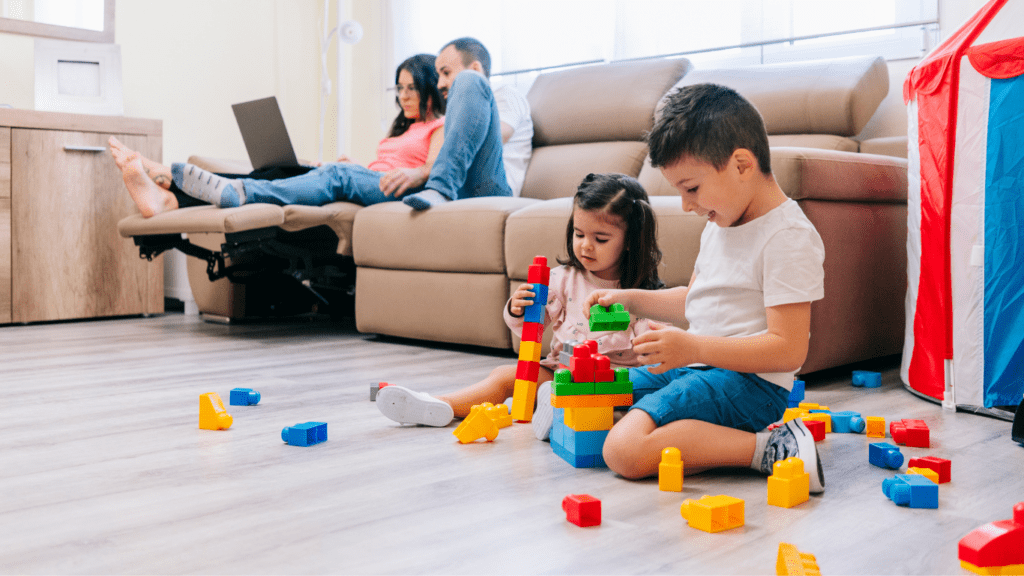Understanding the Digital Landscape
The digital landscape constantly evolves, impacting how children grow and learn. Devices such as smartphones, tablets, and computers become ubiquitous. According to a 2022 report by Common Sense Media, children aged 8-12 spend an average of 4 hours and 44 minutes daily on screen media, while teens aged 13-18 spend about 7 hours and 22 minutes.
Exposure to Digital Content
Children access various forms of digital content through streaming services, educational apps, and social media channels. For instance, platforms like YouTube and TikTok offer video content that ranges from educational to purely entertaining. While these platforms provide learning opportunities, they also expose children to inappropriate content.
Impacts on Development
The digital landscape profoundly affects cognitive, social, and emotional development. Research from the American Academy of Pediatrics suggests that excessive screen time can lead to attention problems and sleep issues. In contrast, educational apps and supervised screen use can enhance learning and skill development.
Parental Controls and Monitoring
Parental controls help navigate the digital space, providing tools to set screen time limits and monitor content. Applications like Qustodio and Net Nanny allow parents to track and control their child’s online activity. Setting content filters and usage guidelines ensures a safer digital experience for children.
Digital Literacy
Teaching digital literacy involves helping children understand how to use technology responsibly and safely. Critical thinking, online etiquette, and privacy awareness form the core of digital literacy. Encouraging kids to question the information they encounter online and to differentiate between credible and unreliable sources is crucial.
Benefits and Drawbacks
Balancing the benefits and drawbacks of digital exposure is key. While technology enhances learning opportunities and social connections, it also poses risks like cyberbullying and addiction. Parents need to be proactive in discussing these challenges with their children and offering guidance on managing them effectively.
Impact on Child Development
Digital exposure directly impacts various aspects of child development according to recent studies.
Cognitive Development
Excessive screen time can negatively affect children’s cognitive development. Research from the American Academy of Pediatrics (AAP) shows that too much screen exposure can lead to attention issues and diminished academic performance. Children aged 8-12, spending an average of 4 hours and 44 minutes daily on screen media, exhibit delayed language acquisition when compared to peers with limited screen use. Educational apps, when properly supervised, can enhance learning by offering interactive content that promotes problem-solving and critical thinking skills.
Social Skills
Digital interaction influences children’s social skills. Studies by the American Psychological Association (APA) indicate that children who spend significant time on social media platforms may experience difficulties in face-to-face communication. Teens aged 13-18, with an average of 7 hours and 22 minutes of daily screen time, often show lower empathy levels and increased social anxiety. However, guided use of digital platforms can help children develop online etiquette and better understand social cues, contributing to improved social skills when balanced with offline interactions.
Screen Time Recommendations
Screen time recommendations play a crucial role in raising kids in a digital world. Parents need clear guidelines to help manage their children’s digital consumption.
Age-Specific Guidelines
- Research from the American Academy of Pediatrics (AAP) provides age-specific screen time recommendations.
- For children aged 0-18 months, avoid digital media use, except for video chatting.
- Toddlers aged 18-24 months can start with high-quality programming, watched together with parents to help them understand content.
- For preschool children aged 2-5 years, limit screen use to one hour per day of high-quality content, while co-viewing to foster understanding and benefits.
- Children aged 6 and older should have consistent limits on screen time, ensuring it doesn’t interfere with sleep, physical activity, or other vital behaviors.
Balancing Digital and Physical Activities

Balancing digital and physical activities is essential for overall child development. Encourage daily physical activities such as outdoor play, sports, or interactive games to complement screen time. Create tech-free zones in the house, especially bedrooms and dining areas, to promote physical interactions and healthy habits. Plan regular family activities that don’t involve screens, like:
- board games
- reading
- other hands-on learning experiences
Additionally, integrate digital and physical activities by using apps that promote movement, like dance or fitness apps, to keep children active while engaging with technology.
These recommendations help parents create a balanced approach, ensuring that their children’s digital interactions support their overall well-being.
Digital Literacy and Education
Recent research highlights the importance of digital literacy in today’s educational landscape. Incorporating technology in learning environments can offer significant advantages while also presenting challenges that educators and parents must address.
Benefits of Digital Tools in Learning
Digital tools enhance learning by providing interactive and engaging educational content. For instance, educational apps like Khan Academy and Duolingo use gamification to make learning more fun and effective. According to a 2021 study by the Joan Ganz Cooney Center, children using educational apps exhibit improved problem-solving skills and higher test scores in math and reading.
Furthermore, digital platforms facilitate personalized learning experiences. Adaptive learning technologies adjust the difficulty level based on a child’s progress, which TailorEd and DreamBox Learning effectively demonstrate. These platforms ensure that students grasp fundamental concepts before moving on to more complex topics, reducing learning gaps.
Teaching Responsible Digital Behavior
Teaching responsible digital behavior involves instilling critical thinking, privacy awareness, and online etiquette in children. According to the International Society for Technology in Education (ISTE), students who understand online safety principles and digital citizenship are better equipped to navigate the digital world responsibly.
I emphasize open communication about online activities to foster responsible behavior. Discussing real-life scenarios helps children recognize the importance of safeguarding personal information and understanding the consequences of online actions. Educational programs like Google’s “Be Internet Awesome” provide resources to teach kids about digital safety and etiquette through interactive games and activities.
Implementing these strategies equips children with the skills necessary to benefit from digital tools while mitigating potential risks.
Parental Strategies
With new research insights in mind, parents can adopt effective methods to guide their children in the digital world. Setting boundaries and encouraging healthy digital habits are paramount.
Setting Boundaries
I focus on setting clear and consistent guidelines for screen time. Research from the AAP recommends no screen time for children under 18 months, except for video chatting. For toddlers, I introduce high-quality programs watched together for interaction and context. Preschoolers can have up to one hour of high-quality content per day.
Children aged 6 and older need consistent limits to ensure screen time doesn’t interfere with sleep, physical activity, or family time. Using tools like Qustodio and Net Nanny helps set these boundaries. These tools track activity and allow me to set time limits and restrict inappropriate content. Family agreements about screen use, like no devices during meals, reinforce these boundaries.
Encouraging Healthy Digital Habits
I promote healthy digital habits by balancing screen time with physical activity and offline interactions. Recent studies emphasize the importance of physical play for cognitive and emotional development. I designate tech-free zones in our home, such as bedrooms and dining areas, to encourage more face-to-face interactions.
I encourage educational and creative digital activities. Research highlights that supervised use of educational apps enhances problem-solving skills. Programs like Google’s “Be Internet Awesome” teach digital literacy, including online etiquette, privacy awareness, and critical thinking.
Open discussions about online experiences help me address issues like cyberbullying and addiction. By fostering an environment where children feel comfortable sharing, I can guide them in navigating online challenges and opportunities responsibly.



 Jameslee Silverayees – Founder Jameslee Silverayees is the founder and driving force behind Makes Parenting Watch, a comprehensive platform designed to support parents at every stage of their journey. As a parent himself, Jameslee recognized the overwhelming amount of information available and the need for a trusted source that offers practical, expert-backed advice. Drawing on his own experiences and his passion for family well-being, he created Makes Parenting Watch to be a one-stop resource for news, updates, and tips on everything from newborn care to family travel. Under his leadership, the website has grown into a highly respected community of parents, caregivers, and experts who come together to share insights and solutions. Jameslee is deeply committed to empowering families with the knowledge they need to raise healthy, happy children while fostering stronger family bonds.
Jameslee Silverayees – Founder Jameslee Silverayees is the founder and driving force behind Makes Parenting Watch, a comprehensive platform designed to support parents at every stage of their journey. As a parent himself, Jameslee recognized the overwhelming amount of information available and the need for a trusted source that offers practical, expert-backed advice. Drawing on his own experiences and his passion for family well-being, he created Makes Parenting Watch to be a one-stop resource for news, updates, and tips on everything from newborn care to family travel. Under his leadership, the website has grown into a highly respected community of parents, caregivers, and experts who come together to share insights and solutions. Jameslee is deeply committed to empowering families with the knowledge they need to raise healthy, happy children while fostering stronger family bonds.
